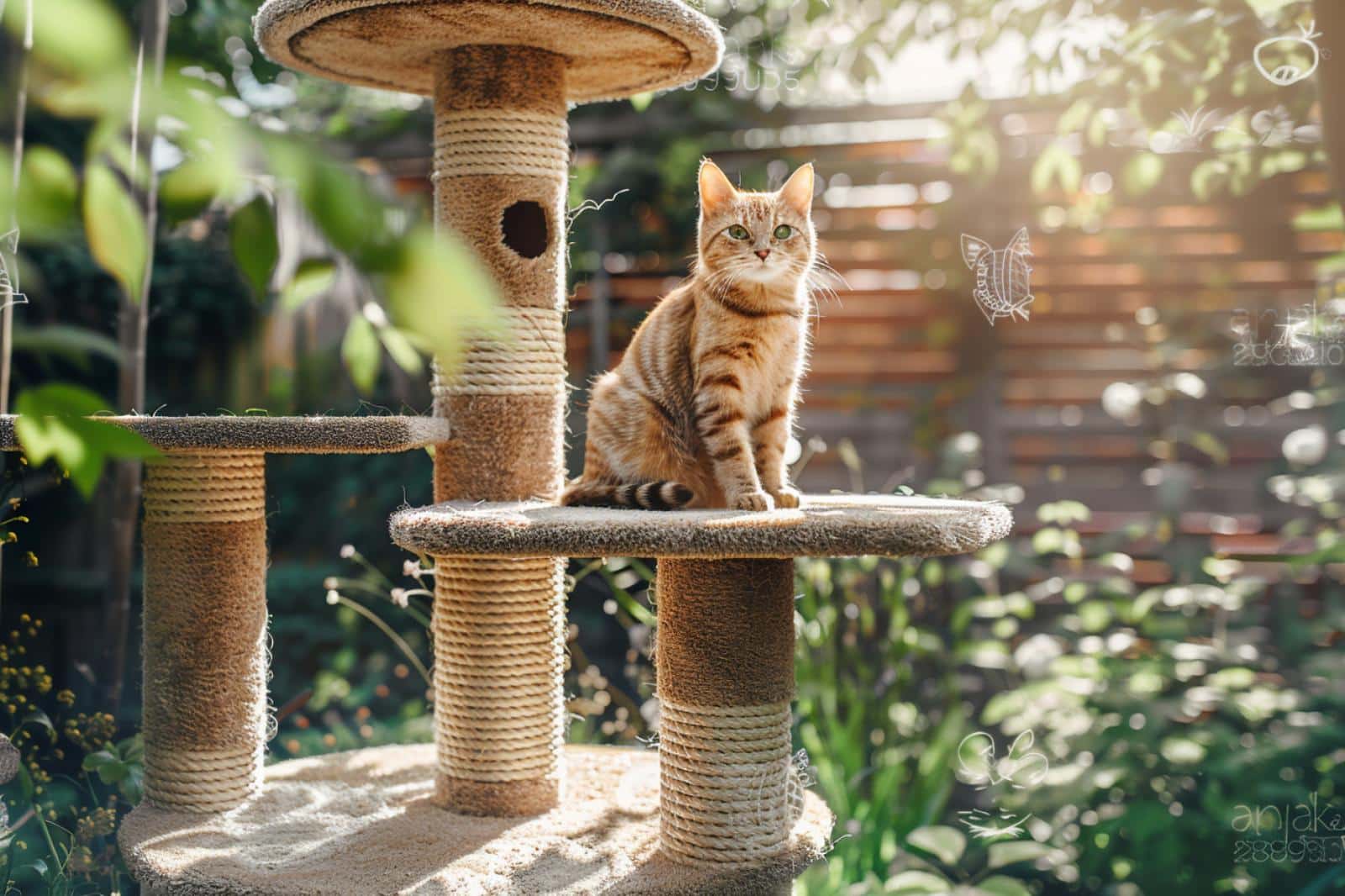What Are the Best Materials for Building a Durable Outdoor Cat Tree?

It’s no secret that cats have a deep-seated love for climbing and scratching. These are instincts honed from their ancestors who lived in the wild. Thus, to keep your feline companions entertained and satisfied, providing them with a DIY cat tree is an excellent idea. Outdoor cat trees offer several benefits including exercise, enrichment, and a dedicated space for your fur babies to express their natural behaviors. But the question is, what are the best materials to use when constructing this kitty condo? In this article, we’ll explore just that, giving you step by step insights into what will make your cat tree not only fun but durable and lasting.
Choosing the Best Wood for the Base
A DIY cat tree starts with a strong and sturdy base, and the best material for this is wood. Your choice of wood will have a significant impact on the durability, stability, and overall quality of your cat tree. But, not any wood will cut it. There are specific types of wood that stand out when it comes to building an outdoor cat tree.
Also to read : How to Create a Stimulating Environment for Ferrets to Curb Destructive Behaviors?
Pressure-treated lumber is a popular choice because it’s resistant to rot and insects—two common problems encountered when placing wood structures outdoors. It’s also sturdy and can withstand the rough and tumble play of your kitty.
Cedar is another excellent option. It’s naturally resistant to decay and insects, and it doesn’t warp as easily as other woods. Its rich, warm color also adds a beautiful aesthetic touch.
Have you seen this : How to Safely Introduce Your Pet to Urban Wildlife Without Causing Stress?
Plywood is a budget-friendly option. It’s strong and resistant to cracking, shrinkage, and warping. However, it’s not as resistant to outdoor elements as pressure-treated lumber or cedar, so it might need extra treatments to enhance its durability.
The Ideal Carpet Material for Scratching
Just like trees in the wild, cat towers need to have an area dedicated to scratching. And the best material to satisfy your feline’s scratching needs is carpet. Carpet used on a cat tree provides a textured surface that cats love to dig their claws into. But remember, you’ll need to pick a carpet that can withstand the rigors of kitty claws.
When choosing a carpet, opt for a cut pile style rather than looped, as loops can get caught in your cat’s claws. A carpet with a high density rating is also advisable. It means the carpet is tightly woven, and thus, more durable. Synthetic materials like nylon or olefin are typically the most durable and easiest to clean.
The Perfect Tree Branches for Climbing
Incorporating real tree branches into your cat tree design can add a touch of authenticity that your cat will absolutely adore. Tree branches provide a natural and engaging surface for climbing, and they can significantly enhance the overall look of your cat tower.
Hardwood branches such as oak or maple are excellent choices due to their durability and strength. They can easily hold the weight of a cat without snapping.
To ensure safety, select branches that are robust and have a rough bark. The bark provides an excellent surface for scratching and climbing. Make sure the branches are thoroughly dried and free of pests before adding them to your cat tree.
Weather-resistant Accessories for Enrichment
Adding various accessories to your outdoor cat tree can enhance your furry friend’s play and relaxation experience. However, these accessories must be weather-resistant to survive the elements.
Stainless steel food and water bowls can be attached for outdoor refreshment. They’re easy to clean and resist rust. Outdoor cat beds made of waterproof or fast-drying materials can add comfort, while solar-powered cat toys can provide endless entertainment.
Securing Your Cat Tree
Finally, your cat tree needs to be secure and stable to ensure your kitty’s safety. You can secure the structure to an existing fixture such as a fence or a wall, or you can bury a part of the base in the ground.
Use galvanized or stainless steel screws and brackets to secure the cat tree as they are much more resistant to rusting.
In building your own outdoor cat tree, remember that durability should be the priority. By selecting the appropriate materials, you will ensure that the tree is not only safe and functional but also able to withstand the test of time and weather. Your cat will surely appreciate this dedicated space where they can climb, scratch, play and relax.
Faux Fur and Sisal Rope for Comfort and Entertainment
To provide the best cat condo experience for your feline friend, you need to ensure comfort and entertainment. A useful choice of material for this is faux fur and sisal rope.
Faux fur is a soft, plush material that mimics the feel of real fur. It’s perfect for adding a touch of luxury to your outdoor cat tree. Cats love the comfort it provides, making it an excellent material for cat beds or lounging areas in your cat house. Additionally, it is durable, weather-resistant, and easy to clean, making it a popular choice for outdoor cat furniture.
On the other hand, sisal rope serves a different purpose. This strong, durable, and weather-resistant material is perfect for wrapping around vertical supports of your cat tower. It provides a robust and textured surface for your cats to scratch on, mimicking the rough bark of trees in the wild. Cats love the feel of sisal under their claws, and it actually helps keep their claws healthy.
A combination of faux fur and sisal rope on different parts of your DIY cat tree will provide your cats with a variety of textures and experiences, keeping them entertained and satisfied.
Wall-mounted Cat House for Safety and Space Efficiency
When dealing with outdoor environments, it’s important to consider safety and space efficiency. In this regard, a wall-mounted cat house can be an excellent addition to your cat tree.
Wall-mounted cat houses are secured to a wall, a fence, or any other vertical structure. This provides an elevated space where your cat can observe their surroundings from a safe vantage point. Cats naturally love high places, and providing them with a wall-mounted cat house can satisfy their instinctual desire to climb and perch.
Furthermore, wall-mounted cat houses are space-efficient. They take advantage of vertical space, freeing up ground area. This is especially useful in compact outdoor spaces.
When building a wall-mounted cat house, ensure that it has a sturdy construction that can hold the weight of your cat comfortably. Use weather-resistant materials for durability. You can also incorporate faux fur for added comfort and sisal rope for scratching.
Conclusion
Building a durable outdoor cat tree requires careful consideration of the materials used. From choosing the best wood for the base like pressure-treated lumber, cedar, or plywood, to picking a high-density, cut pile carpet for scratching, each material should be chosen with both durability and your cat’s comfort in mind.
Incorporating real hardwood branches can enhance the authenticity of the cat tree, while weather-resistant accessories like stainless steel food and water bowls, outdoor cat beds, and solar-powered cat toys can significantly enhance your cat’s outdoor experience.
Moreover, adding faux fur and sisal rope to different parts of your cat condo can provide a variety of textures for your cat’s comfort and entertainment. A wall-mounted cat house can also be a great addition for safety and space efficiency.
By applying these materials and ideas, you can build a cat tree that not only withstands the elements but also provides a fun, comfortable, and enriching environment for your cat. After all, our fur babies deserve nothing but the best. With a DIY cat tree made with durable and cat-friendly materials, they can enjoy their natural behaviors in the great outdoors.
